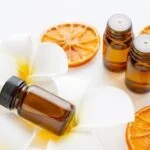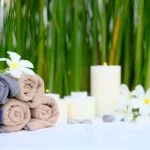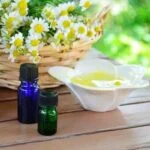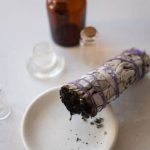Are you looking to create a calming or revitalizing atmosphere in your home? In this article, we will show you how to make your own aromatherapy room spray using natural ingredients and essential oils. Aromatherapy has been used for centuries for its therapeutic benefits, and making your own room spray allows you to personalize the experience to suit your needs.
Aromatherapy is the practice of using natural oils extracted from flowers, bark, stems, leaves, roots or other parts of a plant to enhance psychological and physical well-being. The use of aromatherapy room sprays allows you to enjoy these benefits throughout your living spaces, promoting relaxation, focus, and even energy. By incorporating natural ingredients into the creation of these room sprays, you can also contribute to a healthier environment free from harmful chemicals.
In this section, we will dive into the origins and history of aromatherapy, while exploring the numerous benefits of using aromatherapy room sprays. We will emphasize the importance of using natural ingredients for a healthier environment and mental well-being. This sets the stage for understanding the foundation on which your homemade aromatherapy room spray will be built.
Choosing the Right Essential Oils for Your Room Spray
When it comes to choosing the right essential oils for your homemade aromatherapy room spray, it’s important to consider their therapeutic properties and how they can address your specific needs. Some popular essential oils used in room sprays include lavender for relaxation, peppermint for energy, eucalyptus for focus, and citrus scents for mood enhancement. Researching the various essential oils and their benefits can help you make an informed decision on which ones to include in your room spray.
It’s also crucial to prioritize high-quality, pure essential oils when making your room spray. Look for oils that are labeled as “pure” or “100% natural” to ensure that they are not diluted with synthetic ingredients. Additionally, purchasing from reputable brands or suppliers can guarantee that you are getting authentic essential oils that will provide the intended therapeutic effects.
To select the best essential oils suited to your preferences, consider experimenting with different scent combinations before creating a large batch of room spray. What works well for one person may not have the same effect on another, so it’s essential to personalize your blend based on what resonates with you the most. Engaging in some trial and error with different essential oil combinations can lead to discovering unique scents that cater specifically to your desired benefits.
| Essential Oil | Therapeutic Properties |
|---|---|
| Lavender | Relaxation, Stress Relief |
| Peppermint | Energy, Focus |
| Eucalyptus | Mental Clarity, Respiratory Support |
| Citrus Scents (Orange, Lemon) | Mood Enhancement, Uplifting |
Gathering the Necessary Supplies
To make your own aromatherapy room spray, you will need a few key supplies. Here is a detailed list of the items you’ll need to gather before you get started:
- High-quality essential oils: Look for pure, high-quality essential oils in your desired scents. Some popular options include lavender, peppermint, eucalyptus, and citrus oils.
- Distilled water: Using distilled water ensures that your room spray stays fresh longer and reduces the risk of bacterial growth.
- Witch hazel or vodka: These ingredients help to emulsify the essential oils with the water and act as a preservative for the spray.
- Glass spray bottles: It’s important to use glass bottles as they won’t interact with the essential oils like plastic can. Make sure to choose bottles with fine mist sprayers for better distribution of the aroma.
- Funnel: A small funnel will make it easier to transfer the oil and water mixture into the spray bottle without making a mess.
You can find these supplies at specialty stores that carry aromatherapy products or order them online from reputable suppliers. Ensure that you are purchasing high-quality products as this will ensure the effectiveness and safety of your DIY aromatherapy room spray. Once you have everything you need, you’ll be ready to start creating your own custom blends that cater to your specific needs.
Creating Your DIY Aromatherapy Room Spray
Making your own aromatherapy room spray is a simple and fulfilling way to enjoy the benefits of aromatherapy in your home. By using natural ingredients and high-quality essential oils, you can create a personalized room spray that suits your specific needs and preferences. Here’s a step-by-step guide on how to make your own DIY aromatherapy room spray:
1. Gather your supplies: To create your own room spray, you will need a few essential supplies including high-quality essential oils, distilled water, witch hazel or vodka, and a small spray bottle.
2. Mix the ingredients: In a small bowl or measuring cup, combine the distilled water with witch hazel or vodka. Add a few drops of your chosen essential oils into this mixture.
3. Create your scent: Experiment with different scent combinations to find the perfect blend for your room spray. Popular combinations include lavender and chamomile for relaxation, peppermint and rosemary for focus, and citrus oils for an energy boost.
4. Fill the spray bottle: Once you have created your desired scent combination, carefully pour the mixture into the spray bottle using a funnel if necessary. Make sure to leave some space at the top of the bottle to allow for easy spraying.
5. Test and adjust: Before using your room spray, it’s important to test the scent by spraying a small amount in the air. If you find that the scent is too strong or weak, you can adjust the formula by adding more water or essential oils as needed.
By following these simple steps, you can create your very own customized aromatherapy room spray to enhance any space in your home with natural scents and therapeutic benefits.
Exploring Different Scent Combinations
Relaxation
For those looking to create a calming and relaxing atmosphere in their homes, there are several essential oil combinations that can help achieve this. Lavender, chamomile, and geranium are popular choices for promoting relaxation and reducing stress. These scents can be blended together or used individually to create a soothing and serene environment.
Focus and Concentration
If you’re seeking to boost concentration or productivity, certain essential oils can help improve mental clarity and focus. Scents such as peppermint, rosemary, and eucalyptus are known for their stimulating properties and ability to enhance cognitive function. Creating a room spray with these essential oils can be beneficial for study areas or home offices.
Energy Boost
For an invigorating and energizing effect, citrus-based essential oils like lemon, orange, and grapefruit are excellent choices. These refreshing scents can awaken the senses and provide a natural energy boost without the need for synthetic stimulants. Mixing these oils with a touch of peppermint can further enhance their revitalizing properties.
When exploring different scent combinations for your homemade aromatherapy room spray, it’s important to consider your own personal preferences as well as the specific benefits you are hoping to achieve. Whether you’re aiming for relaxation, increased focus, a burst of energy, or any other desired atmosphere, experimenting with various essential oil blends can help you find the perfect combination for your needs.
Storage and Usage Tips
Storing Your Room Spray
Once you have crafted your own aromatherapy room spray, it’s crucial to store it properly to ensure its longevity and effectiveness. The best way to store your room spray is in a cool, dark place away from direct sunlight and heat. This will help preserve the potency of the essential oils and prevent any degradation of the scent. Additionally, using a dark glass bottle can also aid in preserving the quality of the room spray.
Using Your Room Spray Effectively
When using your homemade aromatherapy room spray, it’s important to use it effectively in different spaces. Before spraying, it’s recommended to shake the bottle gently to ensure that all the ingredients are well mixed. When using the room spray in a smaller space, such as a bedroom or office, simply spritz a few times in the air. For larger rooms or open spaces, you may need to use more sprays to evenly distribute the scent.
Alternate Uses for Your Room Spray
Aside from using your DIY aromatherapy room spray as an air freshener, there are other creative ways to make use of this homemade product. You can lightly mist your bed linens before bedtime for a soothing and calming effect. Additionally, you can also use it as a natural fabric freshener for items like curtains and upholstery. Its versatile uses make it an essential item for promoting relaxation and well-being throughout your home.
By following these storage and usage tips, you can make the most out of your homemade aromatherapy room spray and enjoy its benefits for an extended period of time. Remember that experimenting with different scents and combinations is part of the fun when creating your own personalized room sprays.
Safety Precautions and Considerations
When creating your own aromatherapy room spray, it’s essential to be aware of safety precautions and considerations when working with essential oils. While natural, essential oils are potent substances that can cause adverse reactions if not handled properly.
First and foremost, it’s crucial to use essential oils safely when making a room spray. Always dilute essential oils properly before using them in a spray as using undiluted oils can cause skin irritation or allergic reactions. Additionally, when blending different essential oils, be mindful of their individual properties and potential interactions to avoid any negative effects.
Another important consideration is the risk of allergic reactions to certain scents or ingredients in the room spray. Before using the spray on a larger scale, it’s recommended to perform a patch test to ensure that you don’t have any adverse reactions to any of the ingredients used. As allergies can develop over time, staying attentive to any sensitivities caused by the room spray is also advised.
Finally, always keep your homemade aromatherapy room spray out of reach of children and pets. Essential oils are toxic if ingested and should be stored in a safe place away from curious little hands or paws.
| Safety Tips | Considerations |
|---|---|
| Use diluted essential oils | Avoid allergies with patch tests |
| Mindful blending | Store out of reach of children and pets |
Conclusion
In conclusion, making your own aromatherapy room spray can be a rewarding and enjoyable experience. Not only does it allow you to create personalized scents tailored to your specific needs, but it also provides you with the opportunity to enjoy the therapeutic benefits of essential oils in a convenient and cost-effective way.
By using natural ingredients and high-quality essential oils, you can ensure that your homemade room spray is not only beneficial for your well-being but also for the environment.
As you experiment with different scent combinations and explore the various therapeutic properties of essential oils, remember that there is no right or wrong way to create your aromatherapy room spray. The process offers an opportunity for creativity and self-expression. Whether you are looking to promote relaxation, focus, or energy, creating your own blend allows you to tailor the scent to suit your preferences.
We encourage you to share your experiences with homemade room sprays, whether it’s discovering a new favorite scent combination or how aromatherapy has positively impacted your daily life. By engaging in this communal experience, we can continue to learn from one another and inspire creativity in our aromatherapy practices. So go ahead, unleash your creativity, and enjoy the delightful benefits of your very own homemade aromatherapy room spray.
Frequently Asked Questions
How Do You Make Aromatherapy Room Sprays?
Making aromatherapy room sprays is a relatively simple process. You will need distilled water, essential oils, and a spray bottle. Start by filling the spray bottle with distilled water, then add a few drops of your chosen essential oil or combination of oils. Shake the bottle well to mix the ingredients, and your aromatherapy room spray is ready to use.
What Do You Mix With Essential Oils to Make a Spray?
Essential oils can be mixed with other ingredients such as witch hazel or vodka to make a spray. These act as emulsifiers and help the essential oils combine with the water in the spray bottle. Witch hazel also has additional benefits for skin health while vodka can act as a preservative to extend the shelf life of the spray.
What Essential Oils Are Good for Room Spray?
There are several essential oils that work well for room sprays due to their pleasant scents and potential therapeutic effects. Some popular choices include lavender for relaxation, peppermint for clarity and focus, eucalyptus for respiratory benefits, and citrus oils like lemon or orange for an uplifting atmosphere.
It’s important to choose oils based on your preferences and desired effects when creating a room spray.

Are you looking for a natural way to improve your health and wellbeing?
If so, aromatherapy may be the answer for you.





